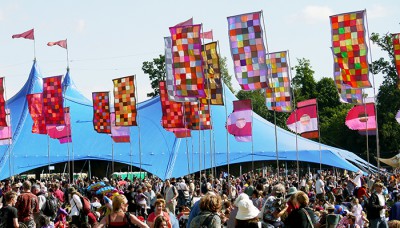
Connectivity is king. For the experience of those attending, to those delivering the event and those watching from afar. In the last 10 years connectivity has migrated from a nice to have to a critical system for any event that wants to engage with its audience and deliver effectively.
Good connectivity presents itself in several ways. Unfortunately for the organiser it’s critical to have an understanding of these aspects, just as they have an understanding of their audience or how many tickets have been sold.
When considering connectivity, it helps to be clear with those who you want to consider and those who you don’t.
The Organiser – local networks and the associated internet connectivity are critical for an organising team to work. Bandwidth here can normally be quickly estimated since it’s a known quantity. Cloud systems such as Dropbox and Office 365 increase requirements but are manageable even on small internet services. Systems such as Skype or more advanced video conferencing which are more common now when working with international committees, can dramatically increase requirements.
The Sponsor – the majority of activations now require some kind of high-quality connectivity. Engaging the sponsor is one thing, showing them what is possible or what can be supported with the right connectivity is next. For overlay locations local cellular (4G) services may be sufficient but within high volume areas these will most likely struggle to deliver significant bandwidth. For many events connectivity in this space is an afterthought which is problematic and expensive. Proactive discussions with sponsors at the start of any engagement will help identify what’s required and the most effective method of delivery.
The Press – considering the media appetite for the internet can make or break an event. Print media need to move images, which can be managed, but those who require outside broadcast type services generally either look to the event to help or use their own broadcast vehicles. Broadcast vehicles can be expensive so generally the approach of delivering onsite bandwidth means that more content can be pushed.
The Partners – bars (cashless) ticketing etc. Anyone who works with the organisers to deliver their part of the event. Smart tenders can mean issues relating to connectivity becomes the partners problem but many times this will add significantly to cost because everyone is doing their own thing. In many cases a shared service is preferred, like power. Cashless services are critical to processing payments. Fast, secure, effective transactions are expected.
The Attendee – normally the final piece of the puzzle. Leading events are now looking to this group first, to encourage engagement and legacy, in which case services such as viewing replays, concession service to seats, emergency messaging, are all common. The network and internet required to carry attendees data can be significant, again, more lead time means more efficiencies. If attendees are not part of scope, then cellular carriers are the best route to providing a level of connectivity.
For any organiser the technical side of events continues to grow, and they must add this to their ‘toolkit’ of knowledge and experience. Just as with ticketing, marketing or venue selection, it’s critical that those in senior positions understand what is being done, what the possible risks are and what their strategy is.



